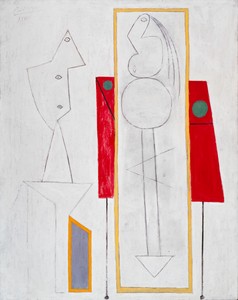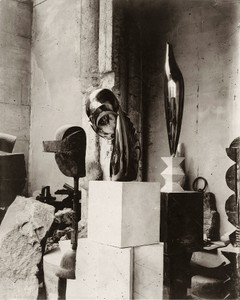Do search. But in order to find other than what is searched for.
—Richard Diebenkorn
Among the most renowned artists to emerge from postwar California, Richard Diebenkorn (1922–1993) is recognized as a key figure in the development of American art. Diebenkorn started out as a representational artist, before gaining fame for work in the Abstract Expressionist mode. He developed a uniquely experimental approach to figuration in the mid-1950s, and a decade later, returned to abstraction with his masterful Ocean Park series (1967–88).
Born in Portland, Oregon, Diebenkorn grew up in San Francisco and attended Stanford University. Serving in the Marine Corps during World War II and stationed in North Carolina and Virginia, he visited art collections in Washington, DC; New York; and Philadelphia, where he studied important works by Paul Cezanne, Henri Matisse, and Piet Mondrian. Upon his return to the Bay Area, he attended the California School of Fine Arts (later renamed the San Francisco Art Institute). In 1946, he received the prestigious Albert Bender grant-in-aid, funding that enabled him to relocate temporarily to Woodstock, New York, where he made occasional, strategic visits to New York City’s galleries and museums. During that year, his wife, Phyllis, recalled that he “learned about color” and “painted from dawn till dusk.” In 1947, he was invited to join the California School of Fine Arts faculty.
Following his first solo exhibition at the California Palace of the Legion of Honor in 1948, Diebenkorn enrolled at the University of New Mexico, Albuquerque, in 1950 for a master of arts degree. There, he produced paintings characterized by spatially ambiguous colored planes, energetic brushwork, and meandering calligraphic lines that synthesize the improvisatory spirit of Abstract Expressionism with desert landscapes seen from above. After a year teaching in Urbana, Illinois, and the summer months in New York, he moved back to California in the fall of 1953. With the Berkeley abstractions (1953–56), his palette became more vibrant and his compositions more complex.






































